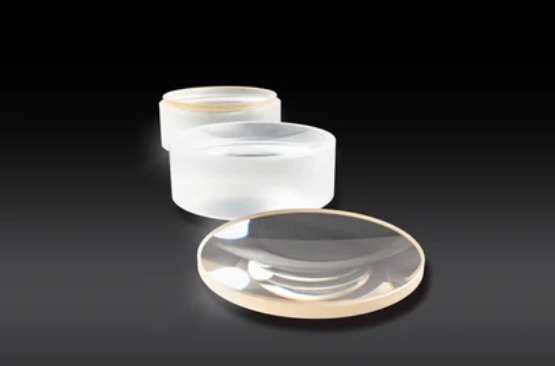Updated:2025-03-13
Views:1583
 WeChat
WeChat
 QQ
QQ
 Online Service
Online Service
Spherical aberration frequently inhibits a single spherical lens from obtaining diffraction-limited performance when focusing or collimating light from monochromatic sources. For many applications, such as collimating the output of a fiber or laser diode, coupling light into a fiber, spatial filtering, or imaging light onto a detector, an aspheric lens is thus frequently the optimum single-element option.
Achromatic Doublets
An achromatic lens is corrected to focus two wavelengths (usually red and blue) on the same plane and is made to minimize the effects of chromatic and spherical aberration. Achromatic doublets are the most prevalent variety of achromat, and flint glass and crown glass are the most often utilized materials in their production.
Torrent Photonics' achromatic doublet lenses are better off-axis than singlet lenses and feature a focal length independent of aperture and operating wavelength. To do this, a multielement design reduces the lens’ chromatic aberration. In addition, better broadband performance than spherical singlets or aspheric lenses is achieved by the doublet’s second (negative) element compensating for the first (positive) element’s dispersion. Torrent’s doublets, which range in diameter from 3mm to 9mm, are frequently seen in analytical and medical equipment.

Aspherized Achromatic Lenses
Aspherized achromats from Torrent Photonics fill the gap between color-corrected achromats and spherical aberration-corrected aspheres, producing aspheric components that are both cost-effective and color-corrected. In addition, the two cemented elements that make up the doublet lenses are matched for their capacity for color correction and modest RMS spot size.
A molded polymer aspheric surface is fused to the doublet’s second surface. These molds produce a stable aspheric shape by removing or minimizing the wavefront errors prevalent in ordinary achromats and increasing the numerical aperture. Fiber optic focusing or collimation, image relay, inspection, scanning, and high numerical aperture imaging are typical applications.

Achromatic Triplets
A triplet lens is typically one piece of low refractive index crown glass, and two pieces of high refractive index flint glass, used to cement a triplet lens, which often eliminates axial spherical, chromatic aberration.
Triplet achromatic lenses use symmetry to correct aberrations and are made for 1:1 conjugate ratios. A low-index core element is sandwiched between two identical, high-index outside elements to create them. With adequate aberration correction for larger fields, each lens is edged down to f-numbers. Torrent can produce custom achromatic triplets in a range of sizes, with particular strength in micro triplet lenses for medical equipment.

Customer Service QQ
Customer Hotline:
Technical Supports